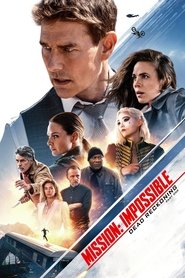Shot. Reverse shot. Shot. Reverse shot. “The entity.” Shot. Reverse shot. Shot. Reverse shot, from a weird angle, slightly askew, almost as if… an entity… were watching. “The entity,” somebody explains, “is an exposition dump.”
Then, an all-timer action sequence.
Rinse and repeat for two hours and forty-five minutes.
The action sequences are phenomenal: clearly shot and brilliantly choreographed. Whether it’s a car chase told from a new perspective, or a fight sequence on top of a moving train, or a shootout in the Arabian desert that makes John Wick 4’s brief sequence look like a missed opportunity, these sequences continue to be among the best in the biz.
I am absolutely not sold on the exposition and the weird camera angles. I am convinced you could chop 45 minutes off this, easily, and have a 5 star film here. I’m certain that the mere threat of this AI tool, and the presence of a human villain driven to get it, would be much a more interesting choice than what the film has, which is an AI villain with a human puppet.
Picture a version of this film where the AI code is trapped beneath the ice, the US government wants the key, and they send their top man to get it. Ethan decides to stop him. The film could end with Ethan getting the key, with Part II still to come, but now he is truly rogue, and the whole US government is coming to get him and his crew in the sequel. A lot of the plot beats would still work — even going fully analogue to avoid being digitally traced — but the story is instantly leaner, more character-based, and more menacing. (Plus, I could much more easily envision paths to closure for a lot of characters in Part II with this version of the story.)
What we got is great. I want more. Just with a little less fat.
Took my Dad to see it this time. He loved it, and proclaimed it “the best Mission: Impossible movie yet.” So there you have it. The Dad Cinema crowd approves.
